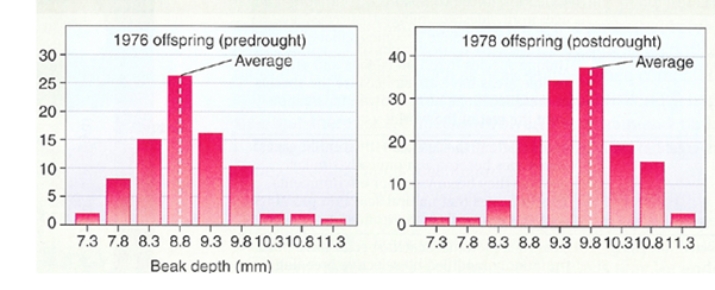Course
Introductory Biology
Study Pack
Set 19 An Introduction To Evolution And Population Genetics
Question 1
(Multiple Choice)
Free
What is true of a fossil that is classified as a "transitional form"?
A)It has all of the traits of its ancestors and all of the traits of its descendants.
B)It has some of the traits of its ancestors and all of the traits of its descendants.
C)It has all of the traits of its ancestors and some of the traits of its descendants.
D)It has some of the traits of its ancestors and some of the traits of its descendants.
Answer
Question 2
(Multiple Choice)
Free
Peter and Rosemary Grant study natural selection in finches on the Galápagos Islands.They have hypothesized that dry conditions produce larger seeds and may result in larger beaks in succeeding generations of finches.The figure below shows their data from 1976 and 1978.The y-axis is the number of birds measured and the x-axis is the beak depth.Do their data support their hypothesis and why? 

A)Yes;because there were more birds measured in 1978 after the drought,therefore they must have been able to get food and reproduce.
B)Yes;because the average beak depth of birds in the population increased from 8.8mm in 1976 to 9.8mm in 1978.
C)No;because even though more birds were measured in 1978,the beak size of the upper range was smaller.
D)No;because in 1976,before the drought,the largest beak depth was still 11.3mm.
E)No;more data would be necessary to show a support of their hypothesis.
Answer
Question 3
(True False)
Free
According to Thomas Malthus,food supplies tend to increase linearly while populations have the potential to increase exponentially,which means that resources will limit population growth.
Answer